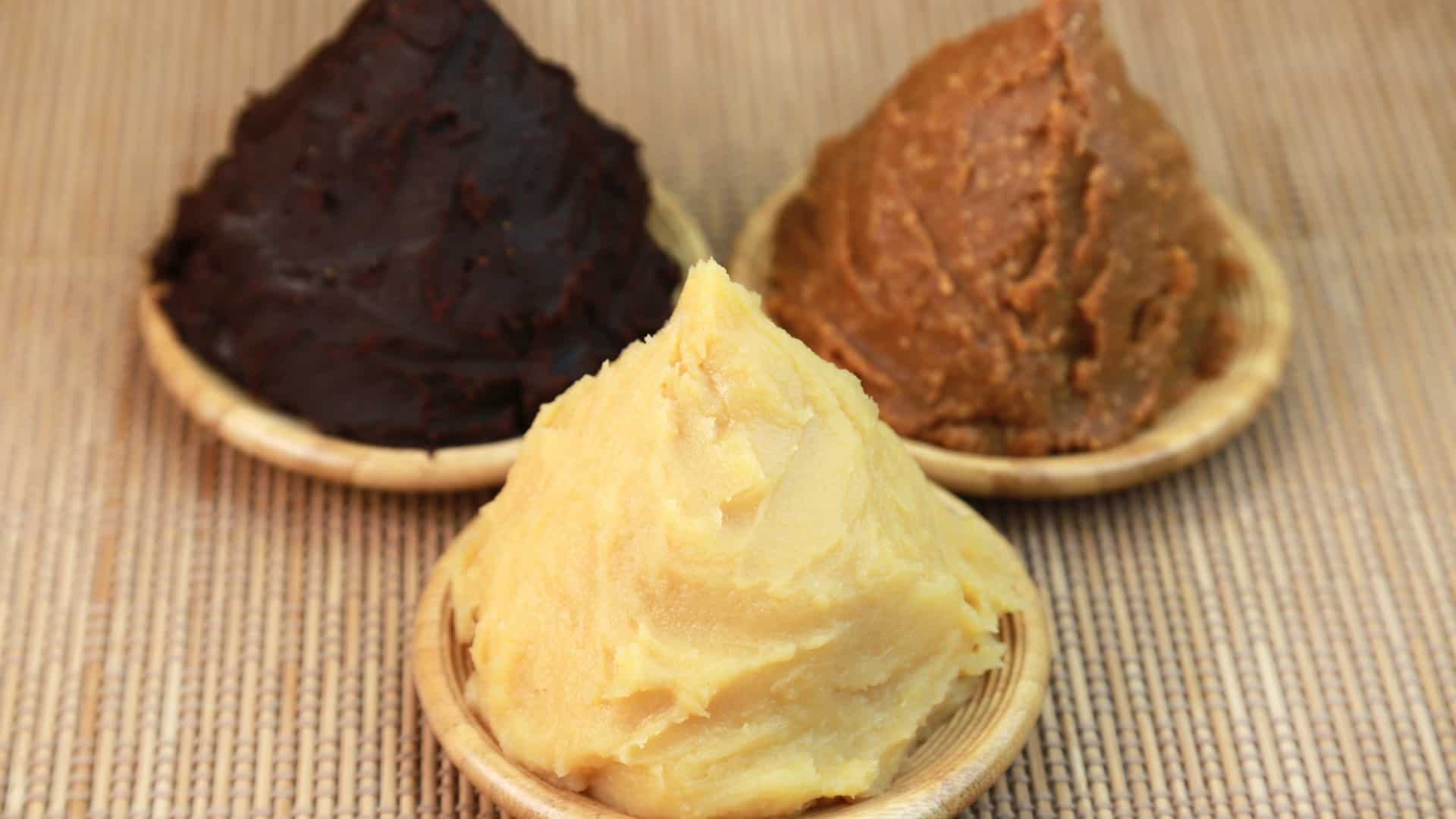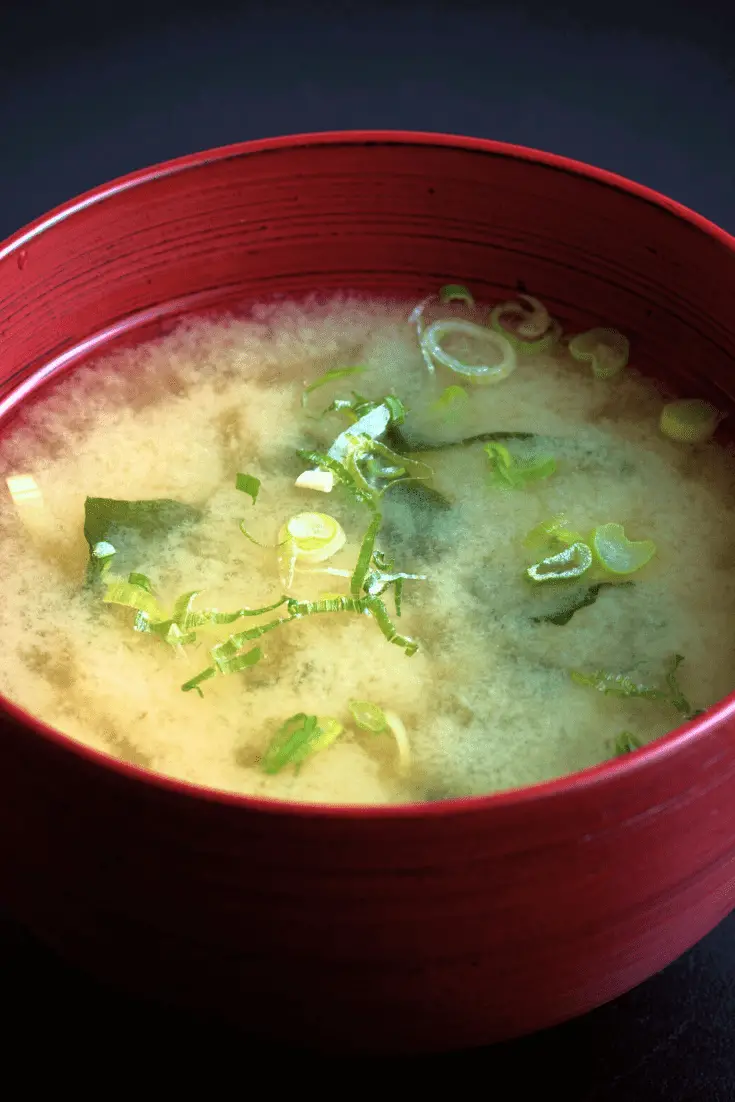Saikyo miso vs white miso: Is there a difference? Yes, but it’s subtle
Miso is a traditional seasoning paste of Japanese origin. It’s made from fermented soybeans mixed with other ingredients, such as salt, rice, barley, and seaweed.
You could look at miso as having 3 distinct types:
- Aka miso (or “red” miso)
- Shinshu miso (“yellow” miso)
- Shiro miso (which is also called “white” miso)

However, other varieties and mixes also exist!
Saikyo miso is one such variation that comes from Kyoto and is common in Kyoto-style cuisine. Saikyo translates to “Western Capital” in Japanese, the former name for Kyoto.
This article will compare the taste and uses of saikyo miso and white miso, helping you to make an informed decision for any future cooking with this awesome ingredient.

Check out our new cookbook
Bitemybun's family recipes with complete meal planner and recipe guide.
Try it out for free with Kindle Unlimited:
Read for freeIn this post we'll cover:
Saikyo miso vs white miso: Taste
White miso is one of the most common miso flavors. It’s typically fermented for a short period of time, making it milder and sweeter in taste when compared to red or yellow miso.
Saikyo miso has a creamy, beige color and distinctively sweet flavor. It’s made with less salt than typical miso; this low sodium content adds to its sweetness.
It also has a short fermentation period and is made with more rice and fewer soybeans.
Saikyo miso vs white miso: Uses

Both saikyo miso and white miso are very versatile. This is mostly due to their mild flavors.
Saikyo miso can be used in a variety of sweet and savory dishes and has been mixed into Kyoto cuisine for centuries. Its smooth and spreadable texture means it can be used as a marinade for meat or fish, on its own as a dip for vegetable appetizers, or in miso soup.
White miso also has many uses, such as being served as a main course soup or mixed into stir-fries and rice dishes. It’s also great in condiments like mayo and can add fantastic flavor to salad dressings, marinades, and light sauces.
Saikyo miso vs white miso: Nutrition

Miso, in general, is full of important minerals and can be a great source of vitamins.
As a fermented food, it also provides beneficial bacteria that can promote gut health.
However, some miso varieties can contain a large amount of salt. White miso is no exception, though low sodium varieties are available.
Since saikyo miso has a lower sodium content than other types of miso, it can be considered the healthier option, especially for those who may need to lower their salt intake.
Saikyo miso vs white miso: Cooking time
Miso doesn’t typically need to be cooked.
However, if you do want to mix it in while cooking, it should be in the final stages and on a low simmer or no heat at all.
The texture of miso paste doesn’t soften under heat, so avoid boiling it, as this will make it lose its much-loved flavor.
If you want to use it for soups and broths, the best thing to do is strain it first using a Japanese strainer:

For your dressings and sauces, thinning the miso out with another liquid (e.g. olive oil) is recommended.
Saikyo miso vs white miso: Common dishes
Saikyo miso is very typical in Kyoto cuisine.
One popular dish with this miso paste is miso ozoni, a Japanese New Year’s soup often cooked with carrots, radish, and mochi (rice cake). Other common dishes include saikyo yaki (fish, typically cod and salmon), Japanese cream stew, and various meat hotpots.
White miso is also commonly used in miso soup, as well as various fish dishes. It also goes great with ramen, stir fry, and vegetable stews, and can be served as a dressing with tofu or marinade with miso-glazed chicken.
Saikyo miso vs white miso: Best brands
When it comes to choosing a miso brand, it’s good to consider flavor, quality, and affordability.
Best white miso brands

The white miso brands below are great options for all these reasons:
- Hikari organic miso paste (white) is a top brand recommended by chefs and experts for its versatility and great taste.
- Miso Tasty organic shiro white miso is light, organic, and ideal for marinades and dressings.
- Maruman organic white miso is additive-free miso from Japan that’s also gluten-free, with a mild and mellow taste.
- Roland white miso paste has a rich umami flavor that’s perfect for soups, spreads, and all sorts of savory dishes.
Best saikyo miso brands

And now for our recommendations of some top saikyo miso brands:
- Hikari organic saikyo sweet miso is made from organic rice and soybeans, giving your dishes an appealing color and fantastic taste.
- Saikyo miso by Sen is sweet, delicious, and nutritious, but can be more expensive.
- Ishino saikyo miso is a fine Japanese miso paste that’s great for marinades, soups, and ramen.
- Hanamaruki shiro saikyo has a wonderful flavor and texture and is made from high-quality soybeans and mineral-rich salt.
Use both saikyo miso and white miso for cooking
You see, the differences between saikyo miso and white miso are subtle, but can still determine the flavor of your dish.
Which one will you go for?
Also read: Can miso expire? Tips on storage and how to tell.
Check out our new cookbook
Bitemybun's family recipes with complete meal planner and recipe guide.
Try it out for free with Kindle Unlimited:
Read for freeJoost Nusselder, the founder of Bite My Bun is a content marketer, dad and loves trying out new food with Japanese food at the heart of his passion, and together with his team he's been creating in-depth blog articles since 2016 to help loyal readers with recipes and cooking tips.
